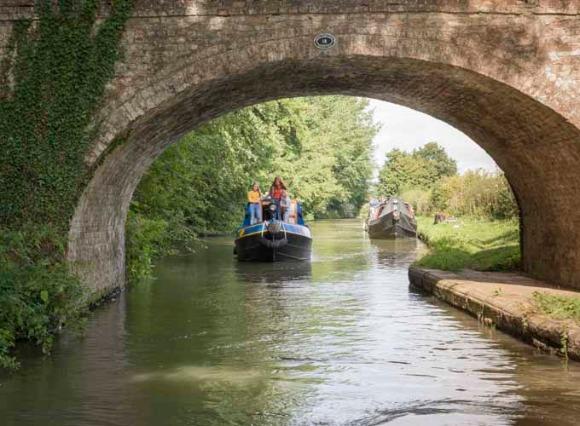New Boaters usually have many questions, but one of the most frequently asked questions is about continuous cruising.
In this article we are going to try and explain just what is allowed and what's not when continuous cruising on the UK waterways.
Continuous Cruising Licences are intended for boaters who want to genuinely navigate around the waterways, so its not necessary to require them to have a home mooring as a condition of their boat licence.

The Canal and River Trust have rules and regulations relating to where a continuous cruiser is allowed to stop. This is to make sure that the boater is actually continuously cruising and not just moving back and forth along a small distance of the same piece of canal.
Although the CRT don't define an actual distance the boat has to travel during the course of a year, they advise that "it is very unlikely that someone would be able to satisfy them that they have been genuinely cruising if their range of movement is less than 20 miles over the period of their licence" So although there is not a minimum distance of travel allowed in any one year, they will look at the furthest points the boat has visited in order to define if a boat is moving on continuously or not.
The CRT have a team of people on the canals and waterways who note down the boat numbers seen in a specific area. This is used to help them plot the boats movements over the course of a year, so that when their continuous cruising licence comes up for renewal this is the pattern they will look at to establish if it is following the licencing rules.
The Rules
- You must make sure that you are not just moving back and forth along a small stretch of waterway.
- You must not stay in any one spot or online mooring on the canal for more than 14 days at a time.
- If you have an emergency or breakdown you must notify the CRT to arrange to temporarily stay longer in one spot.
As mentioned in point three above there are mitigating circumstances in which you may be able to stay in one spot for a little longer, such as: mechanical breakdown; emergency stoppages; impassable ice; serious accident or illness, however you must notify the CRT to arrange this.
What to do if your journey is stopped by a closure
Before starting off plan your long term journeys taking into consideration the planned stoppages which are published on CRT website, and not head towards an area that you know will compromise your journey and limit your range of movement. However, emergency stoppages happen and if your route gets blocked then you will need to re-plan, taking into account the expected duration of the stoppage and the options available to you. You should not remain in one place unless the stoppage is short term and you can continue your journey without overstaying one place longer than 14 days. If you have to re-route then there is no set distance or time before you can reverse.
Why are the rules enforced?
Basically because the waterways are busier today than ever before, so the CRT believe it's right to manage the waterways fairly for all boaters, so all boaters have fair access to the most popular locations, especially in places like London and Bath where some places can get very busy and the demand for moorings very high.
Take care to follow the rules, or the CRT might restrict your licence next time you renew it!
For more information see the CRT website